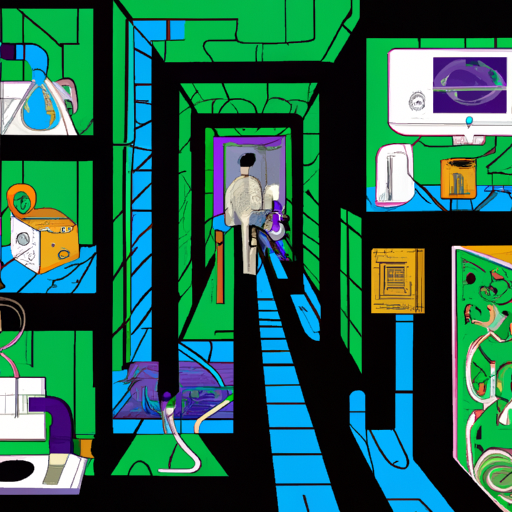The Impact of Remote Work on Cyber Security: Challenges and Solutions in the Era of Work-from-Home
In today’s digital age, remote work has become an integral part of many organizations’ operations. The ability to work from home offers numerous benefits, including increased flexibility and reduced commuting time. However, it also presents unique challenges, particularly in terms of cybersecurity. As more employees connect to company networks from their personal devices and home networks, the risk of cyber threats and data breaches increases exponentially. In this article, we will explore the impact of remote work on cyber security and delve into potential solutions to mitigate these risks.
The Rise of Remote Work and its Impact on Cyber Security
With the rapid advancement of technology and the COVID-19 pandemic, the world witnessed a massive shift towards remote work. Organizations were forced to adapt quickly and facilitate remote work environments for their employees. While this transition provided significant benefits, such as maintaining business continuity and ensuring employee safety, it also introduced new cyber security challenges.
The primary concern associated with remote work is the increased vulnerability to cyber attacks. Employees connecting to company networks from their homes and personal devices can inadvertently expose sensitive data to potential threats. Home networks are typically less secure than corporate networks, lacking robust firewalls and advanced security measures. Additionally, personal devices may not have the same level of protection as company-issued devices, making them more susceptible to malware and other cyber threats.
Furthermore, remote work often requires the use of third-party collaboration tools and cloud-based systems. While these tools offer convenience and efficiency, they can also pose serious security risks. Third-party platforms may not have the same level of security as internal systems, potentially compromising sensitive information and intellectual property. Moreover, the increased reliance on cloud storage and file sharing increases the likelihood of data breaches, as these platforms become attractive targets for hackers.
The Challenges Faced in Maintaining Cyber Security During Remote Work
The shift to remote work brings forth various challenges that organizations must address to maintain their cyber security. These challenges include:
– Lack of direct oversight: With employees no longer physically present in a centralized office environment, supervising their actions becomes more challenging. This lack of direct oversight can result in employees engaging in risky online behavior, such as visiting unsafe websites or falling prey to phishing scams.
– Inadequate home network security: Home networks often lack adequate security measures, making them more susceptible to cyber attacks. Outdated routers, weak passwords, and unsecured Wi-Fi connections can create security vulnerabilities that hackers can exploit.
– Employee device security: Personal devices used for remote work might not have the same level of security features and updated software as company-issued devices. This disparity increases the risk of malware infections and unauthorized access to company resources.
– Increased phishing attempts: Remote work provides an ideal opportunity for cybercriminals to launch phishing attacks. Employees, often working in a more relaxed setting, may be more susceptible to phishing emails and social engineering tactics.
Solutions to Enhance Cyber Security in the Era of Work-from-Home
To mitigate the cyber security risks associated with remote work, organizations must adopt proactive measures and implement appropriate solutions. The following strategies can help enhance cyber security in the era of work-from-home:
– Robust VPN and network security: Utilizing a virtual private network (VPN) ensures secure and encrypted connections between employees and company networks. Implementing strong firewall protection and regularly updating software are fundamental for safeguarding the integrity and confidentiality of information.
– Security awareness training: Educating employees about cyber threats and best practices is crucial in protecting sensitive data. Regular security awareness training can help employees recognize phishing attempts, strengthen their password management, and understand the importance of keeping software up to date.
– Multi-factor authentication (MFA): Implementing MFA adds an extra layer of security to the authentication process. By requiring employees to provide multiple forms of verification, such as a password and a unique code sent to their mobile devices, organizations can significantly reduce the risk of unauthorized access.
– Remote device management: Employing remote device management software allows organizations to monitor and manage security settings on employee devices. This includes enforcing encryption, enabling remote data wiping in case of theft, and ensuring that devices have the latest security updates installed.
– Regular security assessments and incident response planning: Conducting regular security assessments and vulnerability testing helps identify potential weak points in the system. Additionally, organizations should develop a robust incident response plan to minimize the impact of cyber attacks and swiftly recover from security breaches.
In conclusion, the advent of remote work brings both productivity and security challenges for organizations. Maintaining cyber security in the era of work-from-home requires a comprehensive approach that encompasses network security, employee education, and proactive risk management. By implementing appropriate solutions and fostering a cyber-aware culture, businesses can navigate the remote work landscape while safeguarding their valuable assets and information.









